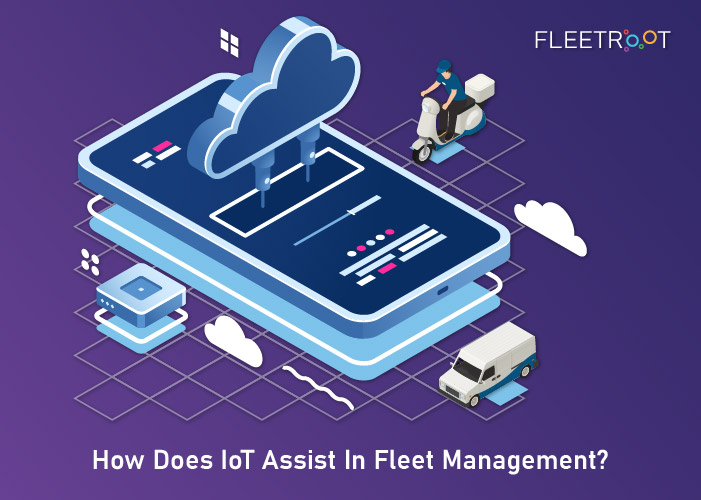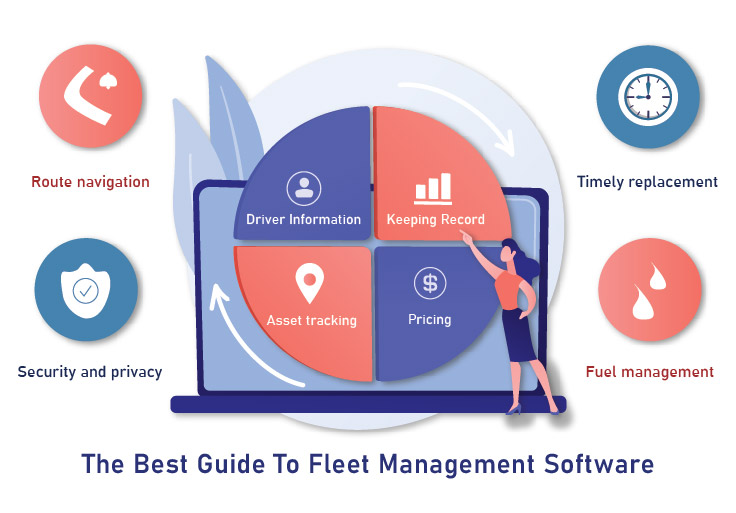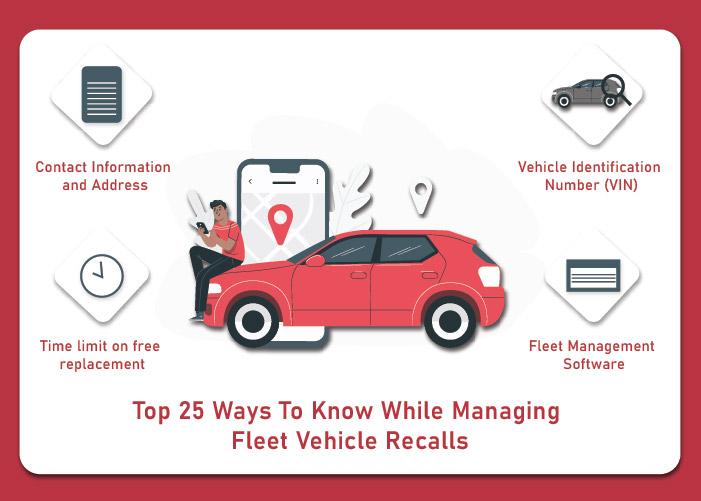The primary objective of fleet operators behind their efforts is to achieve the lowest total cost of ownership (TCO) simultaneously trying to comply with the stringent safety and environmental regulations.
Just as fleet management software ensures smooth tracking of vehicles, Internet of Things (IoT) connects the applications making the fleet operations greener, safer and more cost effective.
Solutions Offered By IoT In Fleet Management
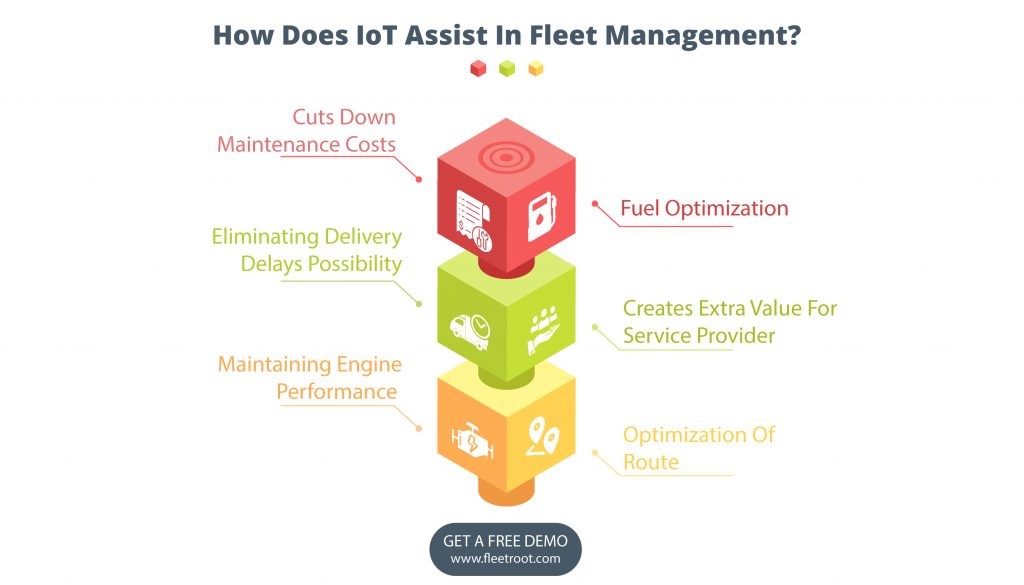
1.Working Through 3 Main Technologies
IoT works through three main technologies in fleet management – RFID, GPS, and OBD II’s.
GPS and OBD II’s help to obtain real-time information on vehicle maintenance, routes, and driving conditions whereas RFID contributes in controlling and tracking products.
2.Offers Better Visibility
IoT collects the data from different sensors and helps the fleet management companies to use these insights fulfilling the various objectives like fleet performance, adherence to laws, driver behavior, idling, and vehicle speeding.
Due to automation, the fleet managers all the time are aware of the whereabouts of the vehicles and drivers.
The automated fleet management also helps a fleet manager to identify the potential problems sooner so that the risks can be mitigated before they get beyond the manageable limits.
Thus, IoT solutions can protect a company from jeopardizing client satisfaction, or impact driver safety thereby reducing the probabilities of increase in costs.
3.Ensures Instant Improvements & Quick Decisions
When IoT is implemented properly, it guarantees an instant improvement in performance by optimum utilization of resources. Collecting and sharing the information quickly can help you take action in real-time thereby helping a company make instant improvements and quick decisions.
It can cut down the time wasted in idling, and over speeding and also reduce the unnecessary wear and tear of vehicles.
4.Clever Monitoring For Preventive Maintenance
The technology not only helps you to get a better insight into connectivity to all the vehicles in your fleet and the behavior of driver but you can also monitor the condition of the fleet on remote locations with the IoT devices.
The technique ensures that you receive alerts for services like coolant temperature, low battery, inspection reminders, check engine and other factors that are essential for the maintenance of your vehicles and to keep them safe and running in top form for a longer period.
5.Leveraging Huge Data
A fleet with lots of vehicles generates huge data and information such as miles logged, fuel consumption, vehicle utilization, speed tracking, and much more.
Prior to IoT, a fleet manager had to collect all the information manually leading to significant lapses in the inefficiency. However, with the onset of IoT the office technology, vehicles, and driver devices are connected in real-time.
It gives the fleet managers ample time to gather the data, analyze it and understand the issues of the vehicles so that quick action becomes possible.
6.Any Time Remote Tracking Possible
Internet of Things helps logistic companies to track daily operations through cloud-based software and helps the fleet manager to track fleets in a remote area from anytime, anywhere. The technology also comes handy when the vehicles are down during the bad weather.
Automated alerts and messages ensure that the two trucks are sent to pick up broken down vehicles or the driver is intimated on time about bad weather conditions and hassles are saved through warning, notifications or automatic rerouting.
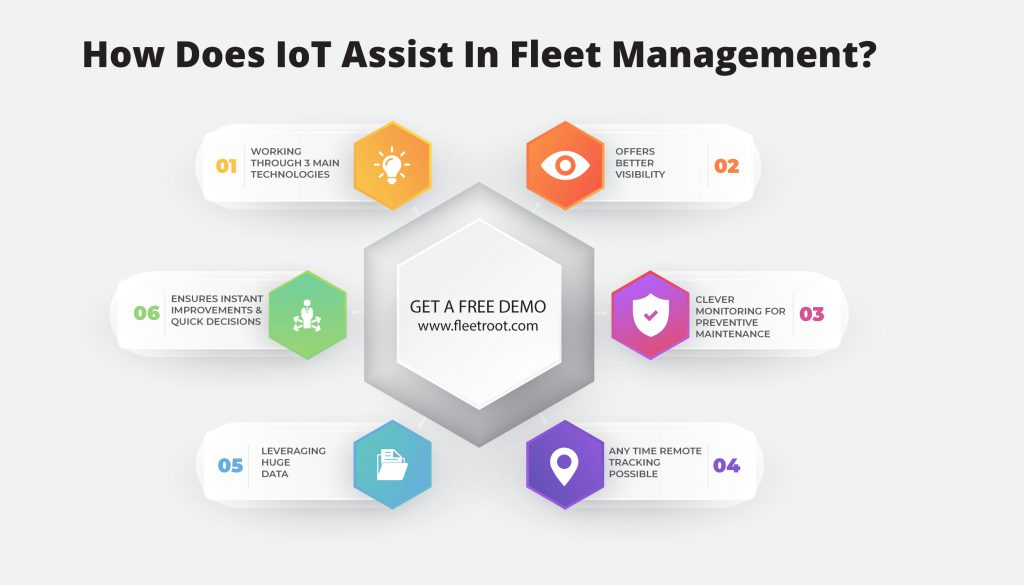
7.Fuel Optimization
One of the biggest concerns for fleet managers is the rising cost of fuel. IoT is also helpful in ensuring fuel efficiency. The behavior and driving style of drivers affect the fuel efficiency of a fleet in a huge way.
As a fleet operator, you can educate the drivers to practice optimized fuel utilization based on information that they receive through the automated software.
In this way drivers can save fuels during braking, shifting, cornering and accelerating.
8.Cuts Down Maintenance Costs
Timely maintenance increases the life of a vehicle. The automated tracker and multiple sensors that are attached to the vehicles send warning alerts and signals when the parts of a vehicle are nearing failure and are in requirement of maintenance. It helps to cut down the increasing uptime of a vehicle.
9.Eliminating Delivery Delays Possibility
Delays in deliveries influence the reliability and credibility of your company. Schedule variance ultimately decreases the quality of services offered by your company.
When a fleet manager is abreast with the causes of delivery delays, they can take the appropriate actions. Indirectly, it increases the quality of service you provide thereby gaining customer loyalty in the long run.
Using the right IoT application you can make timely business decisions and move ahead of the competitors.
10.Creates Extra Value For Service Provider
Wireless tracking solutions offer extra value to the end user as well as to the service provider. The process of installation is shorter and easier. Since the door and temperature sensors are connected wirelessly in the trailer with the GPS tracking device it cuts down the issues that arise when you use cables.
It takes around 20 to 30 meters of cables on an average to wire all the ends from the cabin to the trailer. These cables require extra costs for installations as well as the entire process of wiring.
Similarly, it is also beneficial for the end users since drivers do not find any cables, they cannot damage, tamper or corrupt the tracking system.
11.Maintaining Engine Performance
The overall efficiency of a fleet is dependent on the performance of the vehicles.
The health of an engine is quite crucial for the overall working of a vehicle. The “Remote Monitoring & Diagnostics” solutions of IoT helps an organization monitor and analyze the critical parts of the engine.
The analysis provides an update on diagnostics fault codes and spares part management thereby offering an integrated fleet management solution.
12.Optimization Of Route
Through remote tracking, you are always aware of the route a driver is taking. Furthermore, you have the opportunity to improve the efficiency of the journey by optimizing the route.
Best fleet management software brings success to the business and improves workflow and boosts revenue.
With the help of IOT, it becomes easier to implement a fleet tracking system as well as make a profit-making decision.

